Sugar Hill Lupine Festival | June’s Must-See Event in NH
The Sugar Hill Lupine Festival has become one of New Hampshire’s most colorful and popular summer events. Find out what makes this floral festival so special.
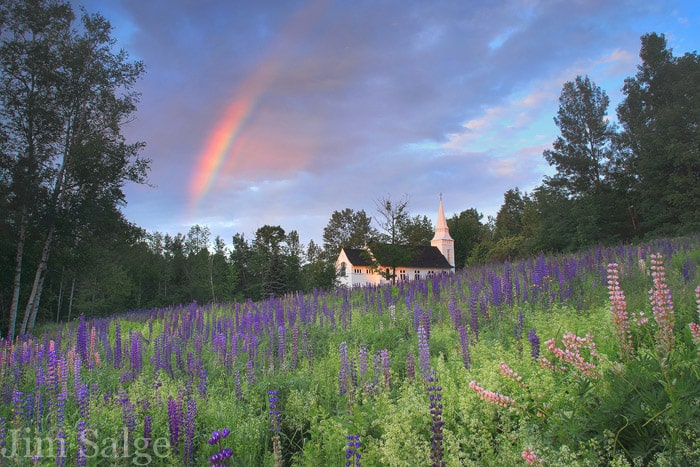
Coffee By Design | Portland, Maine
Photo Credit : Katherine KeenanTucked into a quiet corner of the White Mountains, the small village of Sugar Hill, New Hampshire, is an unlikely tourist destination. It’s not on the way to anywhere and doesn’t have much to offer beyond the quintessential New England white-steepled church and country store, but over the last few decades, Sugar Hill has slowly positioned itself as THE must-visit location in Northern New England during the month of June thanks to the way it’s nurtured and celebrated its annual lupine display.

Photo Credit : Jim Salge
One of the best ways to enjoy this natural beauty is by visiting the Sugar Hill Lupine Festival. With great support and effort by the entire community, the many gardens in the village, the vast fields and farms surrounding the town, and even the roadsides leading to and from are covered with this large, showy, flower in shades of purple and pink.
After a long winter, the explosion of color and the beauty of the changing landscape is something that deserves celebration. The blooms typically last a few weeks, with the festival running throughout the June bloom cycle.
As a photographer, my days during the festival begin early, up before dawn to watch the first light sparkle through the flowers while they are covered in morning dew. I’m rarely alone. Some are clearly other professional photographers, but many though are there just to take in the beauty and greet the dawn. There are few more beautiful sights to see in all of New England, at any time of year.
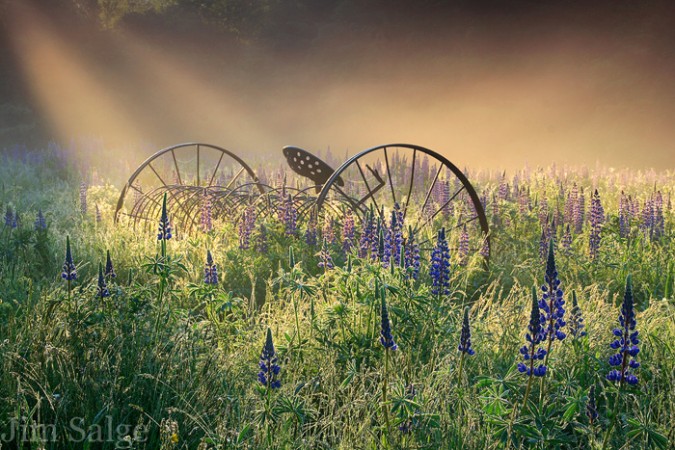
Photo Credit : Jim Salge
Whether or not you greet the sun, sometime during the morning you will inevitably find your way to Polly’s Pancake Parlor on Sugar Hill Road (Rt. 117) for breakfast or brunch. It’s legendary for its amazing views and out-of-this-world pancakes served with a variety of local maple products.
Festival activities usually begin by 10:00 AM and can include an open-air market with local vendors, an art show, concerts, and a town dance. But the main attraction is the flowers themselves, and year after year, they always put on a good show. So where’s the best place to see the lupines in Sugar Hill? The most popular spot is a large field up on Sunset Hill Road, with parking at the former Sugar Hill Sampler (it closed in 2019, so please check for permission before parking). The field has wide walking paths that invite you to stroll and enjoy the views over the flowers and to the mountains that surround the village.
One of my favorite things about the Sampler Field is that along the way there are a few placards with verses by the poet Robert Frost, who had a homestead in Sugar Hill and spent nineteen summers there. The farm, located on Ridge Road, is now a museum and visitors center, and it is also, of course, surrounded by abundant and beautiful lupines.
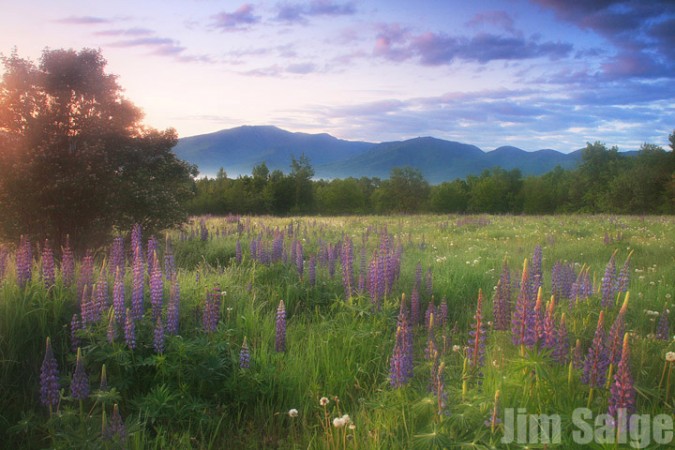
Photo Credit : Jim Salge
The Franconia Notch Chamber of Commerce publishes a guidebook to the festival every year, available for a few dollars at various locations around the village, and it includes a map of all the places where the lupine are growing. But they won’t be hard to find. A ride down to Pearl Lake, a loop around Lovers Lane, a drive across Carpenter Road — the lupines are everywhere. For more ideas, and to stay updated on this year’s blooms, Harman’s Cheese & Country Store maintains a daily blog with pictures before and during the festival!
Accommodations for the festival are wide-ranging. The Sunset Hill House and Sugar Hill Inn get you closest to the action. There are other motels down the road in the village of Franconia, and a few miles further up the road in the larger town of Littleton. For a more rustic experience, the Fransted Campground is within a short drive, and has many modern conveniences and a great swimming hole on the property.
Have you ever been to the Sugar Hill Lupine Festival?
This post was first published in 2013 and has been updated.






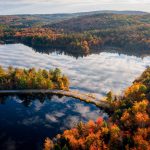
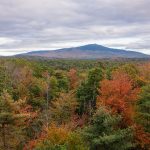
Lupines have been my favorite flowers for many years now. The creative mastery of photography from Jim Salge does them justice…he has become my favorite photographer of my favorite New England state. Thank you, Jim, for sharing this story and for sharing your incrdible talents with us!
I loved your photo’s and you blog on Sugar Hill. My husband and I happened to be there during the Lupin time of bloom. We just love visiting the area. I have done some pretty extensive genealogy research and found that my great-grandfather was born there, both my gg and ggg grandparents are all buried in the cemetery there (Sunnyside). If ever you want to poke around, there you will find the founders of the town, and some very interesting graves. My ggg-grandfather, Dea. Jonathan Bowles was very instrumental in the founding of this little hamlet, along with the meeting hall/church right across from the museum. I so loved reading your article and hope to one day return.
This is for Marilyn – do you also have a relative named Lucy Bowles? I have a skiing picture taken in Lucy Bowles field in Franconia …………… my father Whitney Brooks was born and raised in Franconia …………………..
Hi Pam,
Just reading these old comments. My relative Luke Brooks discovered Franconia! He was a surveyor. My grandmother was Nina Brooks Heald. Do you know if your father was related to Luke Brooks? My grandmother was born in Sugar Hill and her family was mentioned in the Sampler store museum. Thanks!
Jan S.
I love the photo of the lupine, rainbow and church. Where can I
Purchase a copy. Thanks, Jeanne
I want to purchase a copy to frame of the beautiful church, rainbow, and lupine by James Salge? Thanks, Jeanne
Hi Jeanne,
So glad that my work speaks to you. If you visit my website (http://www.jimsalge.com), you can purchase a print through the galleries there!
Best and thanks!
Jim
Beautiful photography!
Great article! A few years ago my husband and I worked with our friends who owned Crawford Notch Campgroud, which is a nice ride to Sugar Hill. We girls decided to take in Polly’s and the Festival that June. We had a scrumptious breakfast at Polly’s then drove the little jaunt to Sampler’s parking lot where I jumped out of the car singing “The hills are alive with the sound of music”! I couldn’t believe what I was seeing..”Heaven” on earth!!!
We travel through NH, on our way to Maine and stayed for a week in a campground last spring. What an amazing area, we ate at Polly’s Pancake Parlor several times and saw all the Lupines. They were beautiful! We also took in all the sites around including the Clog, the Flume, the Castle in the Clouds, many hiking trails, the beautiful lakes, the nature preserves, etc. Truly, one of my favorite places and will be going back this year.
So glad I found this article! Gorgous pictures..will make a point of going as lupines are my favorite flower and have grown several varieties for over 30 years.Will pass on info to my garden club.Thank you!!
Lupine is one of my most favorite flowers. We travel to Cape Breton ,Nova Scotia to our family home in the town of Inverness. Excited to try and visit the Lupine festival for the first time in June. Tried many times to grow Lupine but no luck. Beautiful flower. Can’t wait to try and go to the festival.
I am trying to find out when sugar hill lupine festival is this year but not having much luck.do you know how I would find out.i love it up at sugar hill and the festival is so much fun.thankyou for your time and help.jean Knapp.
Hi Jean. While the flowers will still bloom, the 2020 Lupine Festival has been cancelled in response to the Covid-19 health crisis. We hope you’ll plan a visit for 2021!
I visited the Lupine Festival at Sugar Hill on June 10, 2018 with my daughter Brenda. It was the most beautiful place in NH and I will always remember it. Brenda was a photographer and took many pictures of which I have framed several to remember the last day I spent with Brenda. She passed away two days later on June 13th suddenly and unexpected from a ruptured brain aneurysm. She was a beautiful talented daughter who was loved by all who knew her. I have lupines in my memorial garden to her. I hope to go to the festival this year in memory of my Brenda.
What a beautiful tribute to your daughter. A weekday might be a good time to visit, to have more peace from too many people to spend time in this special place for you. I’m told traditional festival activities are postponed till 2022.
When is the Lupin festival for 2021?
Say what you will about their beauty, the fact they are poisonous to many breed of livestock doesn’t interest me at all…..wouldn’t have them or go see them….
Whenever my family is in the White Mountains we go out of our way to visit Sugar Hill and have breakfast at Polly’s Pancakes. Beautiful and delicious!
Yup, when I hear Sugar Hill I think of Polly’s and golf at Sunset Hill – NH’s oldest course!
Hello I adore these photos I was hoping to find out the location of the hay rake I would love to see it in person. I do not want to harm any of the natural beauty of the place by going looking without an idea of where it is
I spent the day photographing the beautiful landscape at Sugar Hill, NH on June 7, 2022 and it appears the lupines are out in full bloom right now. The Lupine Festival had been planned for last week but was cancelled. According to a few locals the festival was cancelled due to a lack of volunteers to support planning and executing the festival. It was said that the lupines have bloomed a little early due to warm weather, the usual viewing time is early to mid June. As a side note, was hoping to dine at Polly’s Pancake Parlor on Sugar Hill Rd, however, they close at 2:00pm (I arrived at 2:30pm) so you need to plan accordingly to partake in highly recommended iconic establishment. Did make it to Harman’s Cheese & Country Store, cute little country store and the proprietor is very kind.
I went a few springs ago (before Covid). It was a cold spring and there weren’t many lupines in bloom but it was still worth the trip. Sugar Hill is breath taking anytime of year.
hi, my wife nana and I lived in Sugar Hill from the early 70’s ’till early ’76 , when we moved to Ogunquit and opened POOR RICHARD’S PUB, I passed the fields of lupines on my way to and from work or a day at Cannon ….thee is a plaque on a tree commeorating an inn PECKETTS AT SUGAR HILL, SIG BUCHMAYR , a fabled ski pioneer , taught skiing there , i believe…google him up…any way, on my way home daaily , i would pass HARMONS CHEESE SHOP , smack in the center of the town of Sugar Hill…Mr. and Mrs. harmon , the congenial proprietors…at thhat time they wre quite elderly, I was turning 30…just turned 80 …anyway , mrs. Harmon , did not have a cash reister, so she took the paper money, folded it , just so, a stuck it in her bra, a system that seemed to work , pretty well…and at the end of a busy day, she would appear supremely voluptous…never for get her…!!!
great cheddar…..
What an enticing description of the Mrs. Harmon. Sounds like a wonderful place to live. Tom H.
Being a NH native, I’m having trouble reading past Sugar Hill “doesn’t have much to offer.”
Sugar Hill, Franconia Notch and NH has everything to offer! ❤️